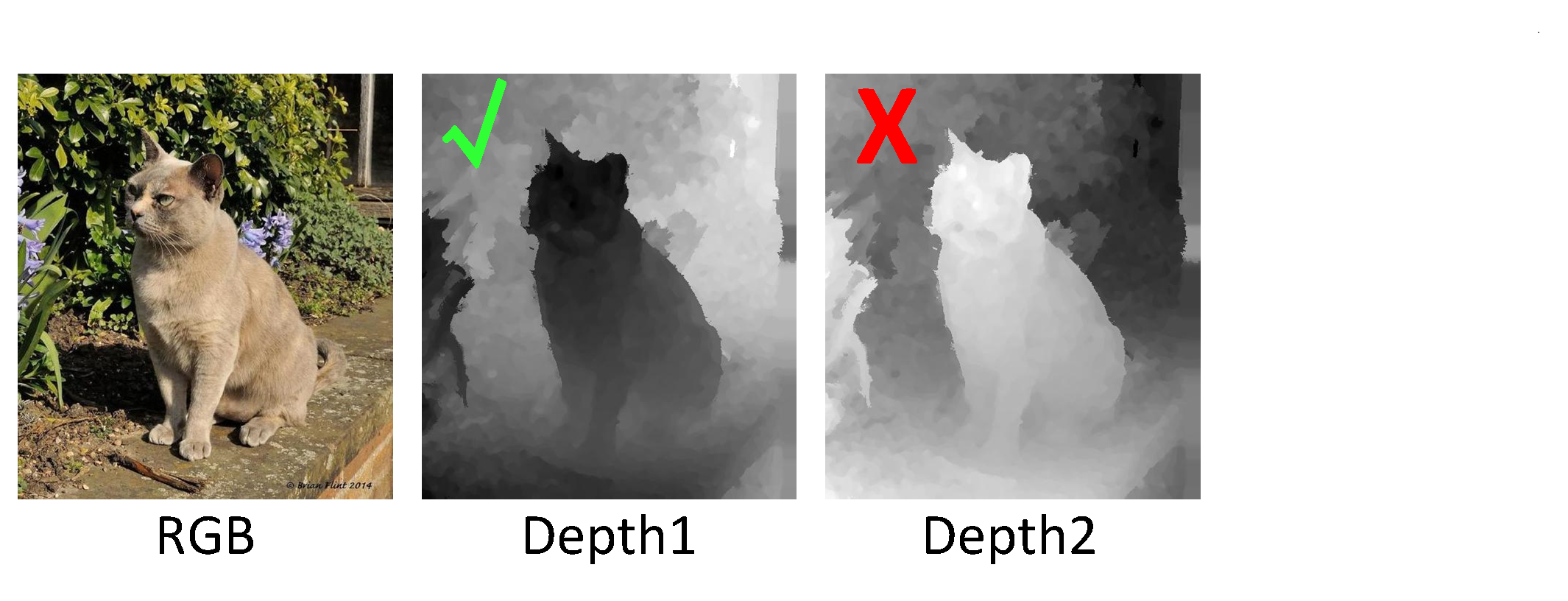Pytorch implementation for JL-DCF: Joint Learning and Densely-Cooperative Fusion Framework for RGB-D Salient Object Detection (CVPR2020) [PDF][中文版], Siamese Network for RGB-D Salient Object Detection and Beyond (TPAMI2021) [PDF][中文版]
- Python 3.6
- Pytorch 1.5.0
- Torchvision 0.6.1
- Cuda 10.0
This is the Pytorch implementation of JL-DCF. It has been trained and tested on Windows (Win10 + Cuda 10 + Python 3.6 + Pytorch 1.5), and it should also work on Linux but we didn't try.
-
Download the pre-trained ImageNet backbone (resnet101/resnet50, densenet161, vgg16 and vgg_conv1, whereas the latter already exists in the folder), and put it in the 'pretrained' folder.
-
Download the training dataset and modify the 'train_root' and 'train_list' in the
main.py. -
Start to train with
python main.py --mode=train --arch=resnet --network=resnet101 --train_root=xx/dataset/RGBDcollection --train_list=xx/dataset/RGBDcollection/train.lst The converged loss value is around 7000.
- Download the testing dataset and have it in the 'dataset/test/' folder.
- Download the already-trained JL-DCF pytorch model and modify the 'model' to its saving path in the
main.py. - Start to test with
python main.py --mode=test --arch=resnet --network=resnet101 --model=xx/JLDCF_resnet101.pth --sal_mode=LFSD --test_folder=test/LFSD Be careful that model and network should match.
The training log is saved in the 'log' folder. If you want to see the learning curve, you can get it by using: tensorboard --logdir your-log-path
densenet161
resnet101
resnet50
vgg16
vgg_conv1, password: rllb
Resnet101:
Baidu Pan: resnet101, password: jdpb
Google Drive: https://drive.google.com/open?id=12u37yz-031unDPJoKaZ0goK8BtPP-6Cj
Resnet50:
Baidu Pan: resnet50, password: ve9z
vgg16:
Baidu Pan: vgg16, password: 4yv6
Densenet161:
Baidu Pan: densenet161, password: qza4
Resnet101 (NJU2K, NLPR, STERE, RGBD135, LFSD, SIP, DUT-RGBD):
Baidu Pan: resnet101, password: v144
Google Drive: https://drive.google.com/file/d/1GoqDlLrN_INNldsbOEAxyyu1QB_urHr0/view?usp=sharing
Resnet101 (SSD):
Baidu Pan: resnet101, password: wmon
Resnet50 (NJU2K, NLPR, STERE, RGBD135, LFSD, SIP, DUT-RGBD):
Baidu Pan: resnet50, password: zen9
vgg16 (NJU2K, NLPR, STERE, RGBD135, LFSD, SIP, DUT-RGBD):
Baidu Pan: vgg16, password: cuui
Densenet161 (NJU2K, NLPR, STERE, RGBD135, LFSD, SIP, DUT-RGBD):
Baidu Pan: densenet161, password: ovuc
Note that our JL-DCF model was trained on depth maps which satisfy the rule that closer objects present lower depth values (are "black"), while further objects have higher depth values (are "white"). such a rule is enforced in order to meet physical common sense. We observed that the model performance would somewhat degrade when using reversed maps (e.g., disparity maps) during testing. So be aware of the following issues when testing the models:
- Depth maps are min-max normalized into [0, 1] or [0, 255].
- Closer objects present lower depth values (are "black").

Baidu Pan:
Training dataset (with horizontal flip), password: i4mi
Testing datadet, password: 1ju8
Google Drive:
Training dataset (with horizontal flip)
Testing datadet
Below is the performance of JL-DCF-pyotrch (Pytorch implementation). Generally, the performance of Pytorch implementation is comparable to, and even slightly better than the previous Caffe implementation reported in the paper. This is probably due to the differences between deep learning platforms. Also, due to the randomness in the training process, the obtained results will fluctuate slightly.
| Datasets | Metrics | Pytorch ResNet101 | Pytorch ResNet50 | Pytorch VGG16 | Pytorch DenseNet161 |
|---|---|---|---|---|---|
| NJU2K | S-measure | 0.917 | 0.913 | 0.910 | 0.917 |
| maxF | 0.919 | 0.915 | 0.912 | 0.917 | |
| maxE | 0.950 | 0.951 | 0.949 | 0.952 | |
| MAE | 0.037 | 0.039 | 0.038 | 0.037 | |
| NLPR | S-measure | 0.931 | 0.931 | 0.926 | 0.934 |
| maxF | 0.920 | 0.918 | 0.915 | 0.924 | |
| maxE | 0.964 | 0.965 | 0.963 | 0.967 | |
| MAE | 0.022 | 0.022 | 0.024 | 0.020 | |
| STERE | S-measure | 0.906 | 0.900 | 0.900 | 0.909 |
| maxF | 0.903 | 0.895 | 0.898 | 0.905 | |
| maxE | 0.946 | 0.942 | 0.942 | 0.947 | |
| MAE | 0.040 | 0.044 | 0.042 | 0.039 | |
| RGBD135 | S-measure | 0.934 | 0.928 | 0.925 | 0.934 |
| maxF | 0.928 | 0.918 | 0.918 | 0.926 | |
| maxE | 0.967 | 0.957 | 0.960 | 0.964 | |
| MAE | 0.020 | 0.021 | 0.021 | 0.020 | |
| LFSD | S-measure | 0.862 | 0.850 | 0.833 | 0.863 |
| maxF | 0.861 | 0.855 | 0.839 | 0.868 | |
| maxE | 0.894 | 0.887 | 0.879 | 0.900 | |
| MAE | 0.074 | 0.081 | 0.084 | 0.073 | |
| SIP | S-measure | 0.879 | 0.885 | 0.887 | 0.894 |
| maxF | 0.889 | 0.894 | 0.896 | 0.903 | |
| maxE | 0.925 | 0.931 | 0.931 | 0.934 | |
| MAE | 0.050 | 0.049 | 0.047 | 0.044 | |
| DUT-RGBD | S-measure | 0.905 | 0.894 | 0.881 | 0.914 |
| maxF | 0.903 | 0.892 | 0.878 | 0.916 | |
| maxE | 0.937 | 0.928 | 0.921 | 0.945 | |
| MAE | 0.042 | 0.048 | 0.054 | 0.040 |
Please cite our paper if you find the work useful:
@inproceedings{Fu2020JLDCF,
title={JL-DCF: Joint Learning and Densely-Cooperative Fusion Framework for RGB-D Salient Object Detection},
author={Fu, Keren and Fan, Deng-Ping and Ji, Ge-Peng and Zhao, Qijun},
booktitle={IEEE Conference on Computer Vision and Pattern Recognition (CVPR)},
pages={3052--3062},
year={2020}
}
@article{Fu2021siamese,
title={Siamese Network for RGB-D Salient Object Detection and Beyond},
author={Fu, Keren and Fan, Deng-Ping and Ji, Ge-Peng and Zhao, Qijun and Shen, Jianbing and Zhu, Ce},
journal={IEEE Transactions on Pattern Analysis and Machine Intelligence (TPAMI)},
year={2021}
}
The complete RGB-D SOD benchmark can be found in this page
http://dpfan.net/d3netbenchmark/